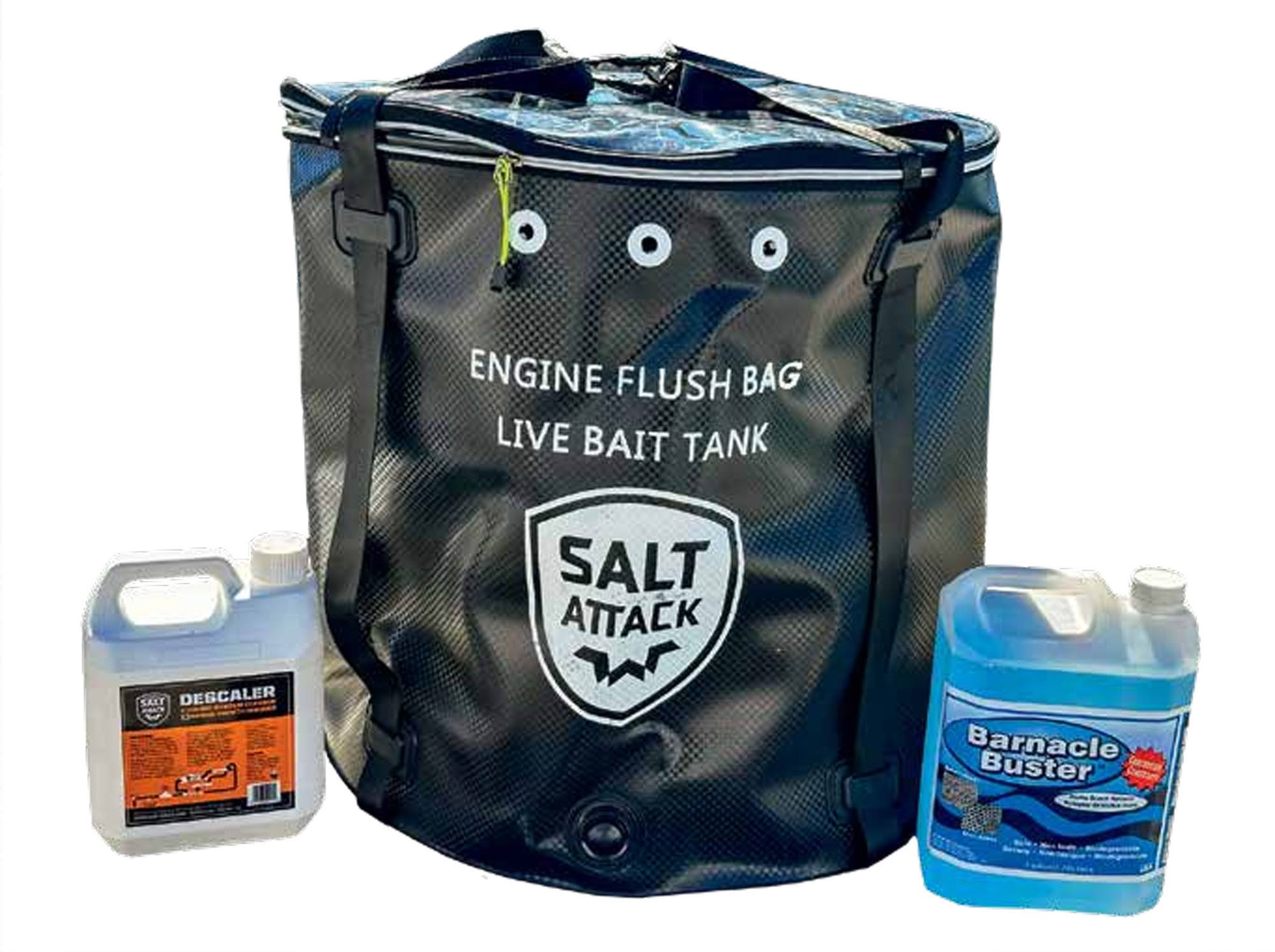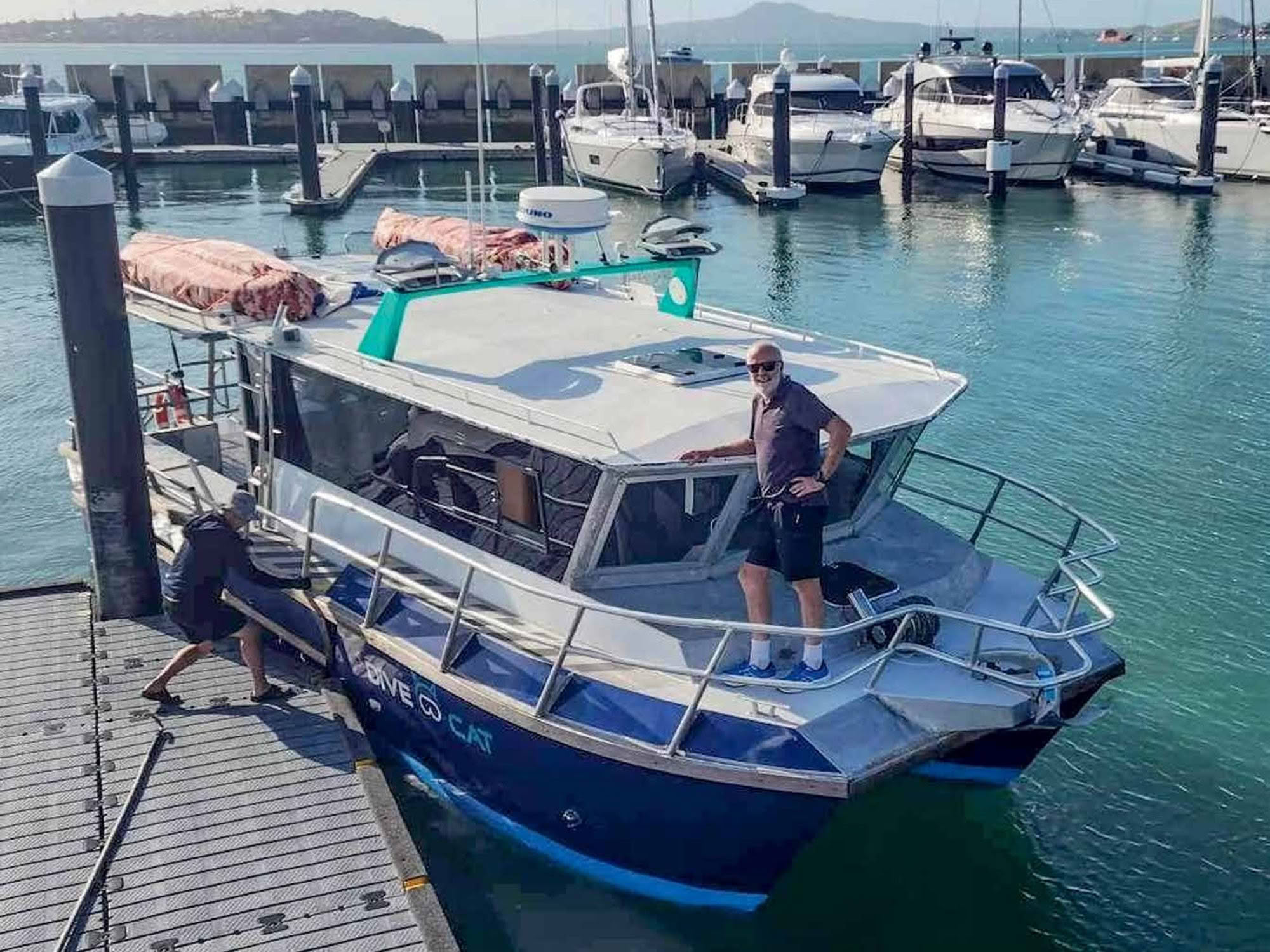

Anyone who leaves a boat unattended knows that pests, birds in particular, are a constant, messy nuisance. Story by Norman Holtzhausen.
They make a noise, poop all over and peck at rubber seals and cable coverings. Their excrement is usually the biggest problem – it looks horrible and smells fishy. Being acidic it can also permanently damage paintwork, the gel coat and any wooden fittings.
From the bird’s perspective a boat’s a great resting spot as well as a good vantage point to keep an eye out for potential food. Other pests sometimes found on boats include rats, mice and feral cats. Even possums have been known to take up residence on boats stored in backyards.
With birds, gulls and terns are the main culprits on the tops of cabins or sitting on the superstructure. But ducks, which like huddling in covered areas like an open cockpit under an open hardtop, can produce a massive amount of poop. Other possible residents include swallows which like roosting under a sheltered overhang and shags – drying their feathers in the sun.
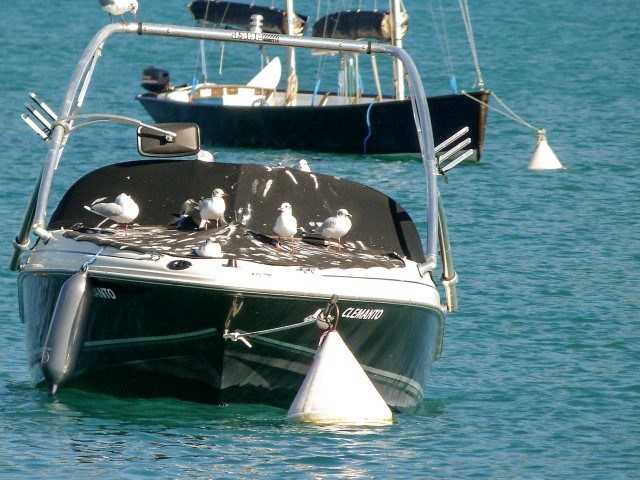
The best solution is keeping these undesirables off the boat in the first place – but it’s not as easy as it sounds and, usually, a multi-pronged approach is needed. In this age of technology we wondered whether there were any new devices, products or techniques that could solve the problem, so began to explore the market.
Although there are a few new options, it seems variations of the tried-and-trusted solutions are still available and, on the whole, still work well. These solutions generally fall into three categories:
• Something that keeps the birds far away, such as predator decoys
• Physical barriers to prevent the birds from landing on the boat, and
• Mechanisms to scare away any birds that do come aboard.
OPTION 1: PREDATOR DECOYS
This includes anything that scares the birds because they think it’s a potential predator. In other parts of the world large plastic raptors such as hawks and even bald eagles are popular, but New Zealand lacks any suitably large predatory birds.
Marine chandlers sell large fake owls, despite our only owl (the morepork) being so small that it is more likely to be food for a seagull than a threat. Nevertheless, the fake ones certainly do work, or at least the people buying them think so.

Other decoys that seem effective are magpies, which harass other birds and are therefore avoided. Unfortunately, this can backfire as real magpies could be attracted by the decoys to see what their cousins are up to.
At the top end of the market are decoys with their wings spread out. These are mounted on a flexible mount and move with the wind. And in the US they also sell large round objects sporting fierce-looking eyes, although these are not readily available locally. Eventually, though, it seems the birds will work out that the decoys are not real and land anyway, sometimes on the decoy itself…
OPTION 2: MECHANICAL DEVICES
Most birds require a clear flightpath for landing, and anything that disrupts this will keep them away. Nets or loosely-slung ropes across the roof or somewhere in the way of an approach or over the rooftop will help.
Metal or plastic spikes are often used on buildings and walls, although for obvious safety reasons these are seldom appropriate for a boat. Chicken-wire (or the plastic equivalent) can also be used, although this is aesthetically unappealing and is hard to pack away when you use the boat. A well-strung net is certainly effective and can have a 100% success rate, but it’s a hassle to set up and pack away.
Another type of mechanical device uses the wind to create movement, scaring the birds as they approach. In years gone by a bunch of supermarket plastic bags tied onto railings, stays and halyards would do the trick. Of course, these are no longer available. The bags blew away from time to time and added to oceanic plastic pollution, so their unavailability is not a bad thing.

Flags or bunting can still be used for this purpose and dedicated holographic shapes that spin and flutter in the wind (and therefore flash sunlight as well as provide movement) are also available. Old CDs work just as well and can often be sourced for free, so this is an easy option to explore.
Other products that work on a similar principle are rotating devices, such as the competing Gullsweep and StopGull products. Both come in different sizes and comprise a base and a rotating pair of arms with wind vanes. Any slight breeze causes the arms to spin around, and this movement scares the gulls away.
They are also easy to stow away when you want to use the boat, optionally leaving the base still attached to the rail. With the boat back on the mooring, they can be deployed again within minutes.
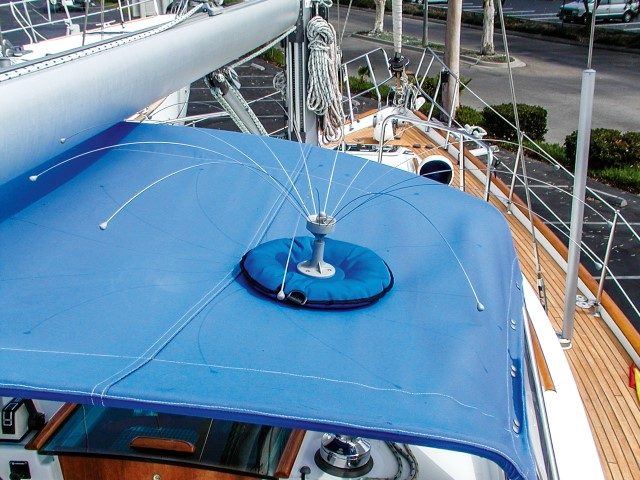
A similar category contains items which make a noise rather than just create movement, and the Germanmade Bird Scare Humming Line is a well-established product in New Zealand. This thin rigid monofilament tape is stretched taut between points on the superstructure of the boat, and the wind passing over the tape causes it to hum loudly.
While this disturbs the birds, it also annoys any humans who happen to be on board or in an adjacent mooring! Though it’s visually unobtrusive the tape is not conducive to a good night’s sleep when overnighting. It’s also easily damaged and requires regular maintenance, especially if the boat is used often.
OPTION 3: ELECTRONIC DEVICES
Everything discussed so far is passive, requiring no power and operating the same way regardless of whether any birds are present or not. At the other end of the scale is a whole range of active devices incorporating electronics.
These detect the presence of a pest and whirr into action, usually in the form of loud noises or flashing lights. Devices start from as little as $39 for a self-contained device with a small solar panel, up to thousands of dollars for sophisticated units that can cover multiple locations.
The most important component of these devices is the sensor to detect the approach of the target species. Most devices use a passive infrared (PIR) motion sensor, similar to those used by burglar alarms or security lights.
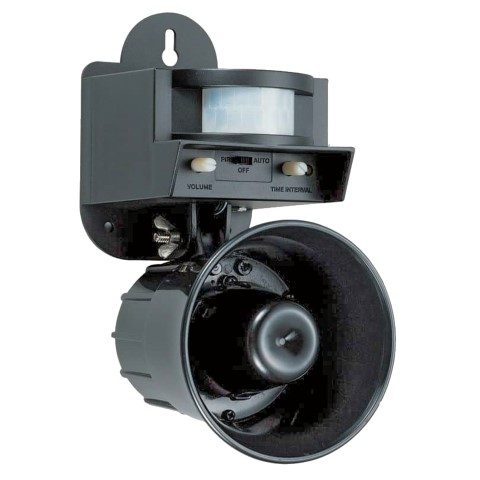
These units are considerably more sensitive than a home device (which typically ignores small objects such as pets), but they also have a shorter (closer) effective range so they are not triggered by birds that are still too far away.
The second part of the puzzle is what actually scares the birds. This can be an ultrasonic sound (inaudible to humans), a loud noise generator or a series of bright flashing lights. Sometimes there’s a combination of sound and bright lights, and some terrestrial pest chasers use flashing lasers as the light component.
These are not suited to boats which move around, as the laser will also shine into nearby boats or residences. The inaudible, ultrasonic option is best suited to urban areas – but these are arguably the least effective. Flashing lights or loud noises work well but are somewhat anti-social and won’t suit a marina or urban mooring location.
One advantage of these electronic devices is they can be permanently installed, are pretty unobtrusive and can be turned off with a flick of a switch. Once in place the start-up procedure on the boat would involve turning the bird scarer off, and the last thing to do after shutting down the boat for the day would be to turn it back on.

The downside of these active devices is, of course, their power consumption, which may not be a concern for a vessel plugged into shore power. But vessels on moorings will need to consider battery capacity to cope with the device’s power draw.
Some of the smaller devices have their own solar panel (and have a very low range as a result), but the more powerful models require a 12v supply. If you have a solar panel on your boat with sufficient capacity, these could be a very good solution.
After looking at all the options and talking with experts in the field it’s clear that there is no silver bullet, no universal solution that works for everyone. Every boat has a different shape, and the physical location of the vessel will impact on the pest problem.
Two boats moored right next to each other may have completely different issues – so the solution can only be found through trial and error. And be prepared for some frustration until you find out what works for you.


